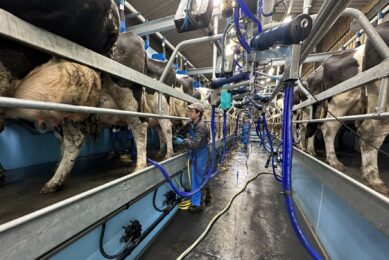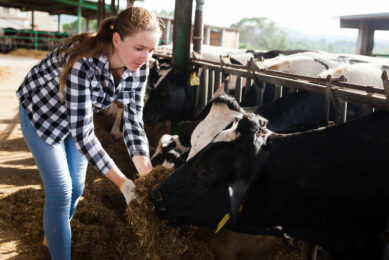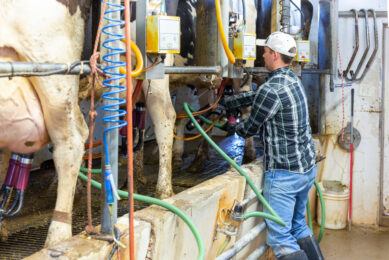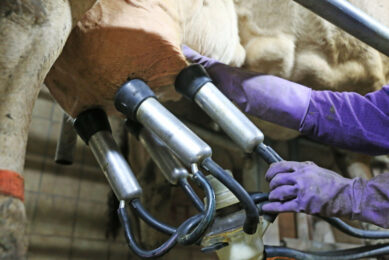Australian master breeder to quit dairying
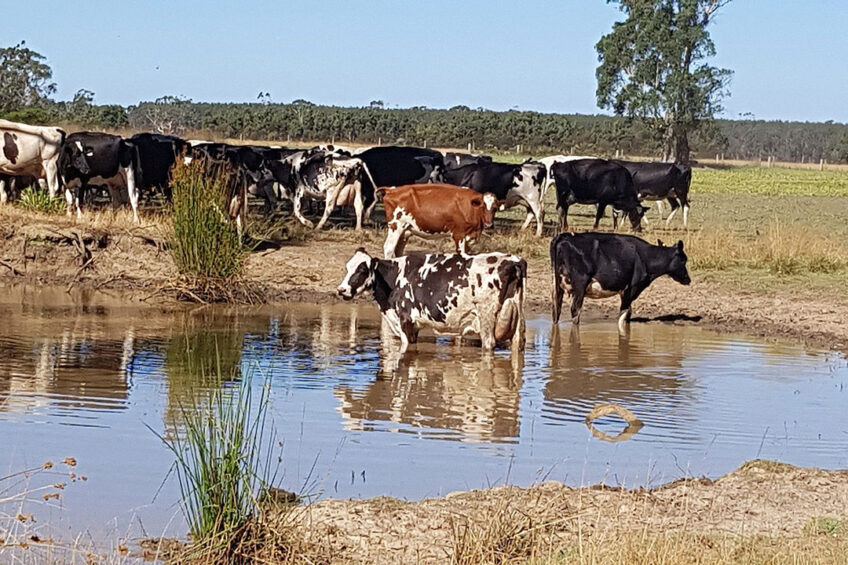
Crippling financial pressure is forcing an Australian dairy farmer and master breeder to quit the dairy industry there and sell her farm once alternative employment can be found.
It’s the end of an era for Donna Edge, the 4th generation to milk cows at her farm at Carpendeit in Victoria, who has been milking and breeding cows for almost 20 years there. The dairy industry in Australia is too afraid to count how many dairy farmers are leaving each week, but at the last official count in mid-2018 there were only 5,699 dairy farms remaining with 1.56 million cows, a huge drop from 22,000 dairy farms in 1980. Lingering drought periods and subsequent inflated feed costs has meant dairy farmers in Australia have been producing milk well under the cost of production signalling the end of the road for many who simply can’t keep losing money.

Becoming a master breeder
Ms Edge runs 120 cows in her Wyena Holsteins herd, which she has already cut from 150 cows to try and reduce costs. She works with her partner Danny O’Shannassy and has a son Dennis, who works for a local agricultural contractor driving tractors, and daughter Cally who is studying to be a nurse. Cutting the herd numbers helped a little with costs but Ms Edge said the real driver that is forcing her to quit is low milk prices. “We milk around 120 cows all year round,” she said, “and have a run off block for heifers. There are about 70 mixed aged heifers on the farm as well to use as followers. l am the 4th generation dairy farmer on this farm and have been here almost 18 years. l lived in North America for 10 years milking cows in the late 1980’s and early 1990s. I am also very passionate about breeding good Holstein cows. l received my first registered heifer for my birthday when l was 12, and still have some of its descendants in the herd today. Back in 2008 l received a master breeder award from Holstein Australia and am very proud to have received this. It’s an award that goes to breeders that have continued to register, record and classify their herd over a 20 year period with points earned with the more animals registered. One of my proudest moments was in 2018 when my daughter showed the junior champion of the youth show at international dairy week with a heifer we bred,” said Ms Edge.

It is time to move on
However, the reality of dairy farming in Australia has hit Ms Edge bad as escalating input costs as well as ‘clawbacks’ and non-payment of milk by the processors hit hard.
“Our cows yield around 8,000 litres per year at 3.2% protein and 4.2% fat,” she said. “The yield used to be 9,500 litres per cow but we’ve dropped it back 1,000 to 1,500 litres per cow in the past couple of years because it doesn’t justify buying the extra quality feed on the milk price we’re paid. We’ve had to cut production and change our feeding programme for the cows mainly due to the inputs costs. We are now supplying a processing company called Union Dairy Company owned by the McKenna family that also have the Midfield Meats abattoir. Currently, we are being paid AUS$ 6.06 per kilogramme of milk solids or around 45 cents per litre. The milk price over the past 5 to 10 years has been all over the shop. With the processor claw back and then non-payment of milk our farm gate price for 2 years was terrible, and much less than cost of production. This year the milk price is not too bad but input costs are killing people,” said Ms Edge. All of these constraining factors have taken their toll on many dairy farmers across Australia, but Ms Edge is one of the latest farmers to call time on her dairy career. She said: “l have had enough, it’s time to move on. The claw back on our autumn milk price and then non-payment for 6 weeks of spring milk several years ago has taken its toll on me and my equity. I am not sure exactly when the farm will be sold. I have been applying for jobs but nothing has come my way yet but something will I am sure,” she added.
Labour issues and cheap imports
Increased feed costs plus a concerning lack of farm labour in Australia are problems arising across the entire country down under. Ms Edge outlined the real issues and said: “Hay prices are at an all-time high and is becoming increasingly hard to find. The grain mix farmers use is around $ 500 per tonne which is double or more than most years.
Also read: Farm report: Leading Brazilian dairy expands to 1,000 cows
“Milk prices are on the rise but so many farmers have been forced to leave the industry. Income estimates for the 2019 to 2020 season is coming in at $ 7 per kilogramme of milk solids. And labour for the bigger farms is a real challenge as people do not want to work in agriculture any more. Cost cutting is the only way to survive for dairy farmers who have to try conserving more home grown feed. Many farmers are driven by their debt load but many have no equity left. Banks are actually currently being quite supportive,” she said. There are some other factors in Australia that are affecting the dairy industry there and that includes the threat of cheap imports encouraged by foreign owned companies there. “The foreign ownership of quite a few of the manufacturing companies in Australia has meant cheap imports have access to our market,” she added. “There are now lots of New Zealand and American produced butter and cheese available in our supermarkets. “Our own supermarkets have undervalued dairy products with $ 1 per litre of milk and $ 6 per kilogramme of cheese and this has had a downward effect on our farm gate prices,” she concluded.
Join 13,000+ subscribers
Subscribe to our newsletter to stay updated about all the need-to-know content in the dairy sector, two times a week.



